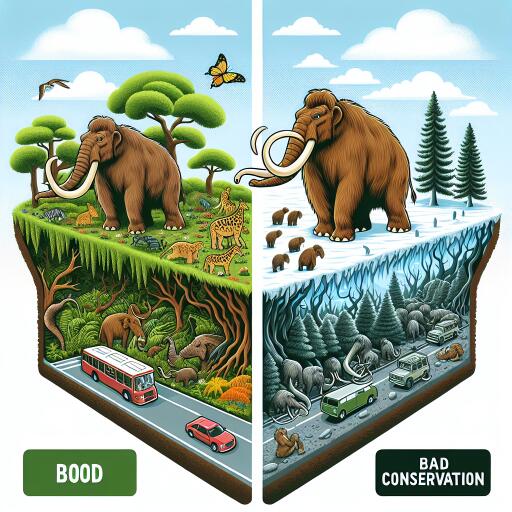
Editorial: Mammoth De-extinction Is Bad Conservation
The ambitious endeavors of Colossal Biosciences, a startup spearheading de-extinction efforts using gene-editing technology, aim to bring back extinct species such as the woolly mammoth. Recently, the company reported significant advancements, including the successful generation of stem cells from Asian elephants and the creation of genetically modified mice sporting mammoth-like coats. Prominent scientists involved, including experts from Harvard and MIT, suggest that these milestones could pave the path toward using mammoths as a means to restore Arctic grasslands, thereby contributing to climate change mitigation efforts.
Public intrigue and substantial investor interest have propelled the company’s valuation to $10 billion. While these scientific advancements appear technically promising, the broader ambition of resurrecting mammoths for conservation purposes seems profoundly misguided. Rather than aiding wild elephant populations or the environment, this effort risks prioritizing spectacle over meaningful ecological solutions, overlooking profound consequences for both animals and humans.
Questionable Foundations
Colossal argues that reintroducing mammoths to frigid landscapes could assist in climate change mitigation by preventing permafrost melt and preserving Arctic grasslands. The company envisions mammoth hybrids trampling through snow, facilitating air exchange that potentially prevents greenhouse gas emissions locked within the soil from escaping. However, similar ecological claims have often faltered under scientific scrutiny.
Take, for example, the fabled ecological impact of wolves reintroduced into Yellowstone National Park, often cited in conservation narratives. Initially, studies suggested that wolves’ presence induced a cascade of ecological effects. Further examination revealed flaws in these studies, demonstrating the influence of human intervention such as hunting on the park’s ecology. Similar skepticism accompanies claims about the ecological roles of various apex predators.
Colossal draws inspiration from research suggesting that large herbivores might help sustain colder ground temperatures in certain ecosystems. Nevertheless, significant questions remain. Can existing herbivore populations across northern latitudes be augmented effectively? If so, why reincarnate mammoths when living species could presumably fulfill the ecological niche more economically?
Ethical Dilemmas
The undertaking of using elephant surrogates for developing mammoth calves raises ethical concerns about animal welfare. Despite efforts to conserve individual species, conservation strategies often overlook the suffering experienced by individual animals. Modern practice in wildlife conservation exemplifies this oversight, neglecting the impact on the welfare of species involved in experimental resurrection agendas.
The concept of using living elephants to breed mammoth offspring is fraught with potential complications. Captive breeding efforts frequently encounter high rates of stillbirths and infanticides, challenges likely exacerbated by attempting to integrate disparate genetic elements in lab-derived embryos. The inevitable trial-and-error process may lead to significant distress for surrogate elephant mothers and mammoth calves.
The potential physiological and social implications facing successful mammoth offspring paint a concerning picture. Adapted to ancient ecosystems, mammoths might struggle in contemporary environments lacking the cultural knowledge necessary for survival—a knowledge traditionally transmitted through matriarch-led elephant herds.
Reprioritizing Conservation Goals
Directing resources toward ambitious de-extinction projects detracts from pressing conservation needs that could yield tangible benefits for threatened species and ecosystems. Rather than investing in mammoth resurrection, funds could bolster initiatives addressing critical challenges facing Asian elephants, such as human-wildlife conflict, habitat connectivity, and poaching.
In diverse regions like India, where wild Asian elephant populations attempt to coexist alongside dense human populations, conservation budgets fall short. Effective use of resources could include the development of advanced technologies for habitat mapping, community-based invasive plant management, and innovative conflict mitigation strategies.
Moreover, the skills and innovations stemming from organizations like Colossal could contribute meaningfully to broader environmental conservation initiatives. Genetic engineering technologies hold potential for applications in carbon sequestration efforts, agricultural sustainability, and alternative protein development to reduce ecological footprints.
The allure of reviving extinct species such as the woolly mammoth highlights the complex intersection between scientific capability and ethical responsibility. Meaningful conservation must prioritize evidence-backed strategies that are not only effective but ethically sound.
In conclusion, the fascinating prospect of de-extincting the mammoth, while captivating, represents a substantial misallocation of resources. In addressing challenges like climate change and species preservation, an emphasis on ecological realism and ethical consideration is paramount.





Leave a Reply